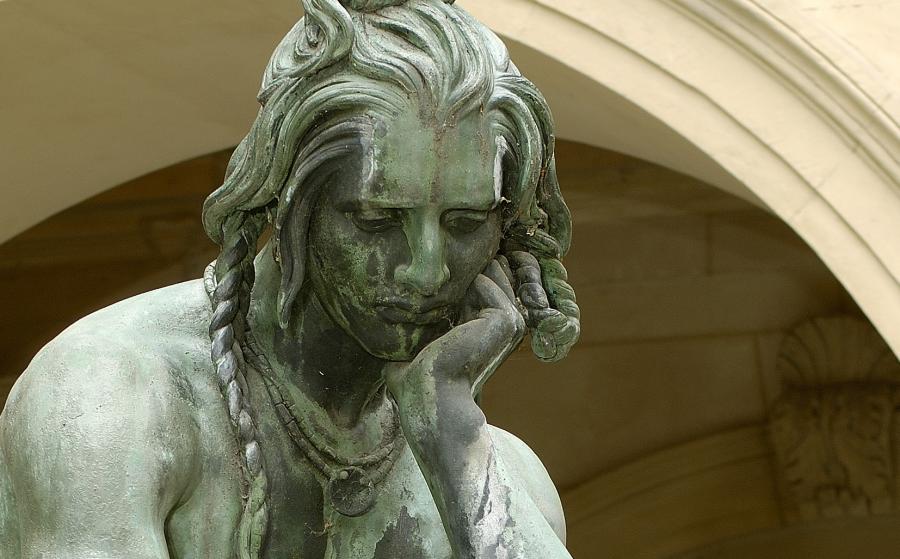Chactas in Meditation on Atala’s Grave
Information sur l’artiste
Francisque Duret [Paris, 1804 – Paris, 1865]

Chactas en méditation sur la tombe d'Atala, 1836
Image © Lyon MBA - Photo Alain Basset
Published in 1801, Chateaubriand's novel Atala-was a great success. Sculptor Francisque Duret took the subject for this sculpture from the book, presenting the sculpture at the Paris Salon of 1836. He captures the moment when, the day after his beloved dies, the Indian Chactas returns to her grave: "one elbow resting on my lap, holding my head in my hand, I remained buried in the most bitter reverie". The artist adds a contemporary touch with exotic details: the young man is dressed only in a pagne, his features are typically Indian, his hair is braided and he is wearing jewellery. However, Duret’s approach cannot be considered ethnographic, as he did not carry out any real documentary research: his main source was actually a painting by Anne Louis Girodet, Atala’s Funerals (Paris, the Louvre), which had triumphed at the Salon of 1808.
Numerous sketch models were created in preparation for this piece, one of which is held in the museum's collections. The composition follows a traditional model, using the figure's pose to portray pain and melancholy. It also echoes Cain and his Race cursed by God by Antoine Étex. This sculpture offers a reconciliation between the forms of the Classical tradition, to which Duret stayed faithful throughout his career, with Romantic themes.
1836
Bronze
H. 135; L. 55; D. 80 cm
Received from the French government in 1836; long term loan from the Centre national des arts plastiques
Inv. H 1732





